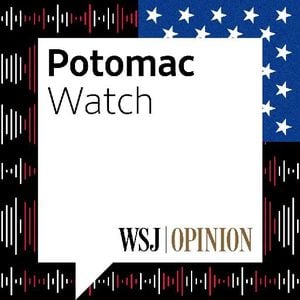On August 20, 2025, world leaders and defense chiefs from all 32 NATO member countries gathered—virtually, but with palpable tension—to hash out security guarantees for Ukraine, a nation still battered by the ongoing conflict with Russia. The high-stakes meeting, presided over by Italian Admiral Giuseppe Cavo Dragone, the chair of NATO’s Military Committee, was intended to clarify the alliance’s position and explore what real security for Ukraine could look like in the months ahead. But as the dust settled, it became clear that the Trump administration’s approach to the peace process had stumbled into a diplomatic minefield, complicating efforts to bring the war to an end.
According to Asia Times, the Trump administration had made a crucial promise to Russia before the NATO meeting: any peace deal would rule out Ukraine’s membership in NATO. What wasn’t clear, however, was whether this promise also meant that NATO peacekeepers would be kept out of Ukraine. This ambiguity proved costly. Russian officials, it seems, interpreted Trump’s assurance as a blanket exclusion of any NATO military presence in Ukraine—boots on the ground or otherwise. The lack of prior consultation with Moscow only deepened the confusion and, ultimately, the diplomatic rift.
The NATO-led meeting itself was a showcase of military leadership. US General Alexus Grynkewich, newly appointed as Supreme Allied Commander Europe (SACEUR) and head of the US European Command, delivered his first briefing to the assembled defense chiefs. General Dan Caine, chairman of the US Joint Chiefs of Staff, was also in attendance, underscoring the gravity of the discussions. According to Asia Times, participants debated what a security guarantee for Ukraine might entail: Would it involve the deployment of foreign troops? If so, how many, and where would they be stationed? Could they be expected to engage in combat, or would their role be limited to support and training?
Speculation swirled in diplomatic circles and the media. Some reports suggested that British and French troops, or perhaps even German and Polish forces, might be willing to deploy to Ukraine. British sources, however, were quick to stress that their troops would not be on the front line, insisting they would remain “far back” from the action. President Donald Trump, meanwhile, stated unequivocally that the United States would not send ground troops, but would support Ukraine’s security with US aircraft. These might include reconnaissance planes—and, potentially, fighter jets like the F-35. Where those aircraft would operate from remained an open question: Would they launch from Ukrainian soil, or from bases in neighboring Poland and Romania?
The Russian response was swift and uncompromising. Foreign Minister Sergey Lavrov, speaking for Moscow, rejected the idea of any foreign troops being deployed in Ukraine, calling it “absolutely unacceptable for Russia and for all sensible political forces in Europe.” He dismissed such proposals as a “road to nowhere.” For Russian officials, any hint of NATO military involvement in Ukraine—however indirect—crossed a red line. According to Asia Times, this intransigence created a major roadblock for the Trump administration’s peace initiative.
As the diplomatic wrangling continued, opposition to a possible peace deal involving territorial concessions to Russia began to mount in the West. On August 21, 2025, The Washington Times ran a front-page story warning that any agreement ceding part of Ukraine’s Donbas region to Moscow could have disastrous consequences. The article argued that such a deal “could immediately strengthen the Russian military, providing a major win for one of America’s leading adversaries in an era of great power competition.” Ukraine, the paper noted, would lose some of its most fortified defensive positions, while Russia would gain a deeper military footprint in a strategically vital region. The Russian navy could extend its control over the Black Sea, and Moscow would acquire de facto ownership of valuable mineral deposits in eastern Ukraine.
Think tanks, including the Institute for the Study of War, echoed these concerns. Their analysts, quoted by The Washington Times, warned that ceding territory would not bring peace, but rather embolden Russia and undermine the security of both Ukraine and its Western allies. The message was clear: any peace deal that rewarded aggression risked making the situation worse, not better.
Meanwhile, the political drama played out not just in Brussels and Moscow, but also in the United States. On August 21, 2025, veteran political analyst Chuck Todd weighed in on the unfolding saga during an episode of The Chuck ToddCast. Todd argued that Russian President Vladimir Putin’s attempts to manipulate President Trump during recent negotiations were a “huge miscalculation.” According to Todd, Putin showed “low regard” for Trump during their Alaska summit, which ended without a ceasefire deal. Instead of offering Trump a diplomatic victory, Putin simply “paid lip service” to Trump’s concerns—most notably, echoing Trump’s skepticism about mail-in voting—but withheld the one thing Trump truly wanted: an admission that Russia would never have invaded Ukraine if Trump had been president.
“That is total disrespect by Putin, right? It totally should undermine the idea that Putin wouldn’t have launched this invasion of Ukraine had Trump been president,” Todd said, as reported by Mediaite. Todd suggested that Putin’s refusal to help Trump secure a ceasefire, a peace prize, or greater credibility with the West was a strategic error. “To not enhance his reputation at a time when he’s desperate to enhance it, not to help him get his ceasefire, get his peace prize, give him more credibility with the west with a guy that you have influence, really seems to be a mistake on Putin’s part.”
Todd predicted that Putin’s approach would backfire, arguing that the Russian leader was underestimating Trump’s need for a diplomatic win. “I think he’s miscalculating,” Todd said, noting that empty flattery would not be enough to sway the former president or secure a favorable deal for Russia.
In the midst of all this, the Trump administration’s strategy for resolving the Ukraine conflict appeared increasingly fraught. The combination of ambiguous promises to Russia, internal disagreements among NATO allies, and mounting skepticism from analysts and the press left the peace process on shaky ground. The administration’s insistence on excluding Ukraine from NATO membership may have been intended as a concession to Moscow, but the lack of clarity over military involvement only deepened mistrust on all sides.
The diplomatic process, for now, continues. But with each passing day, the obstacles to a lasting peace seem to multiply. Russia remains adamant that any foreign military presence in Ukraine is unacceptable. Western analysts warn that ceding territory would only strengthen Russia’s hand. And political observers in the United States see little evidence that the key players are willing—or able—to bridge the widening gaps in trust and ambition.
As the world watches and waits, the fate of Ukraine remains uncertain—caught between the competing interests of great powers, the calculations of political leaders, and the harsh realities of war. The next moves, it seems, are as unpredictable as ever.



